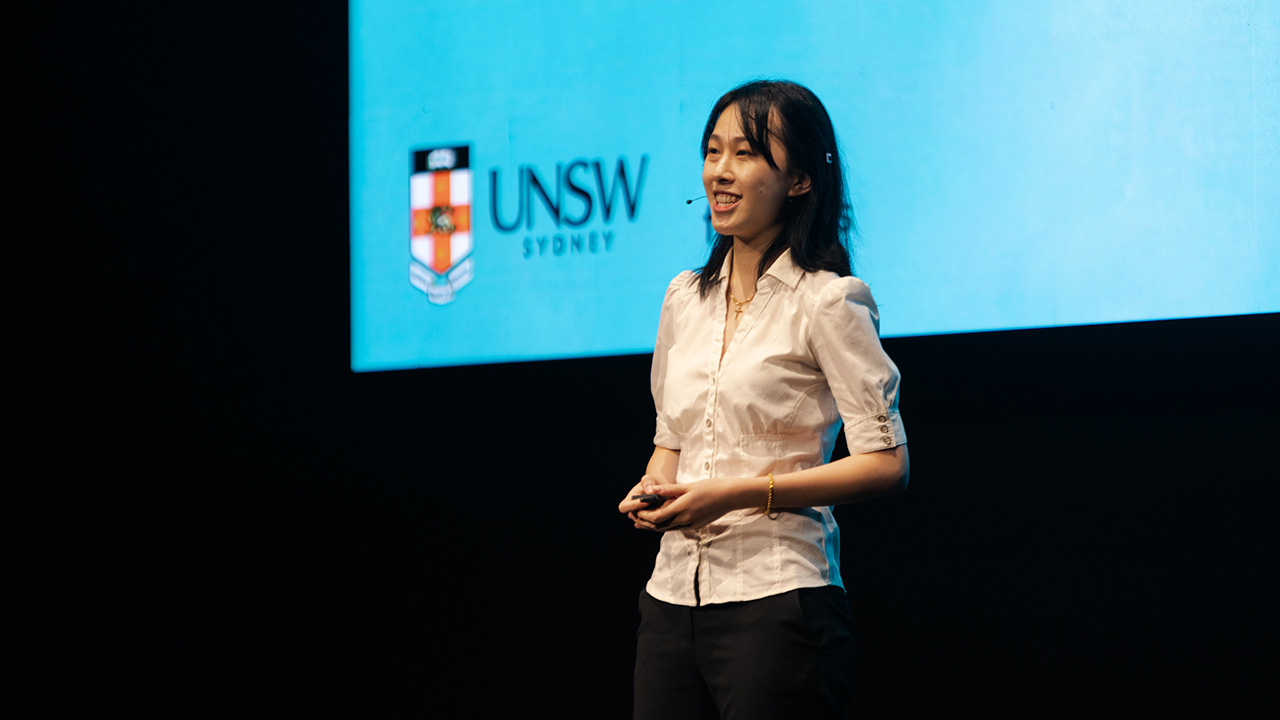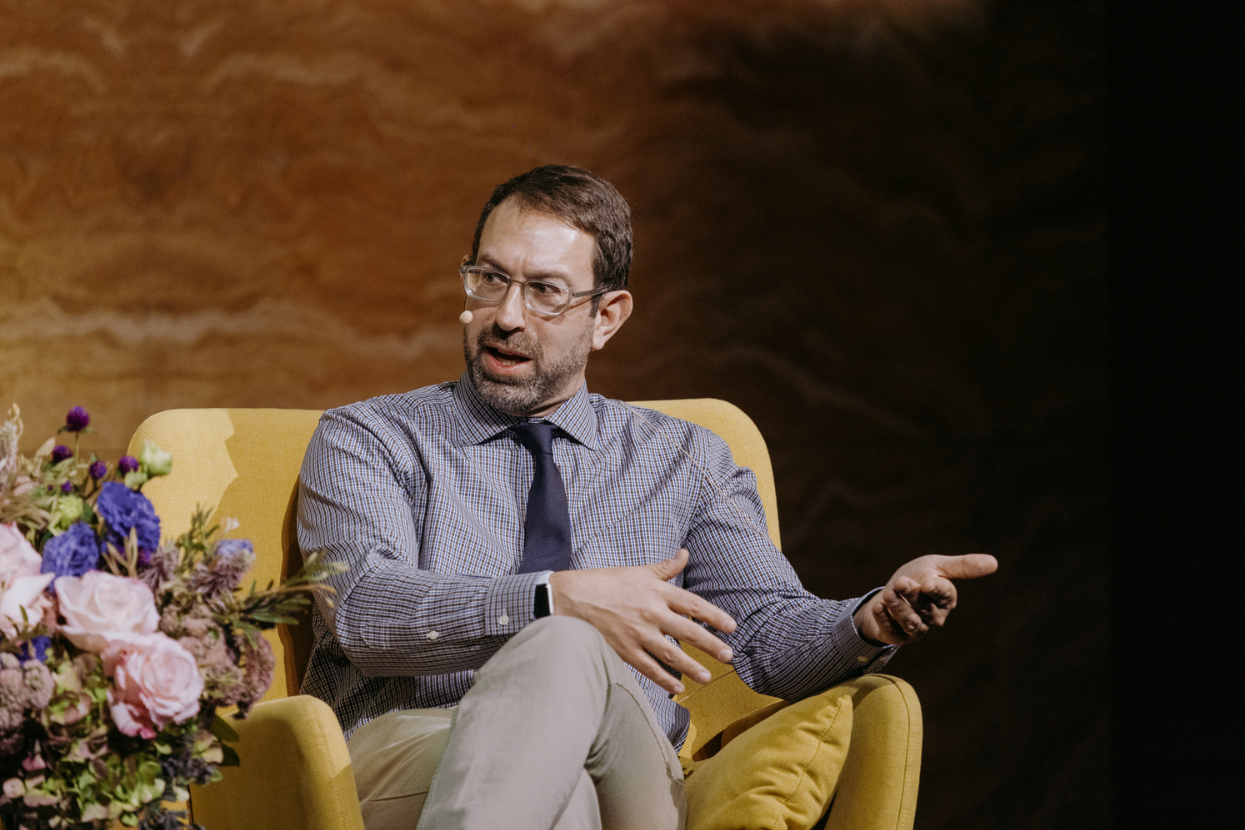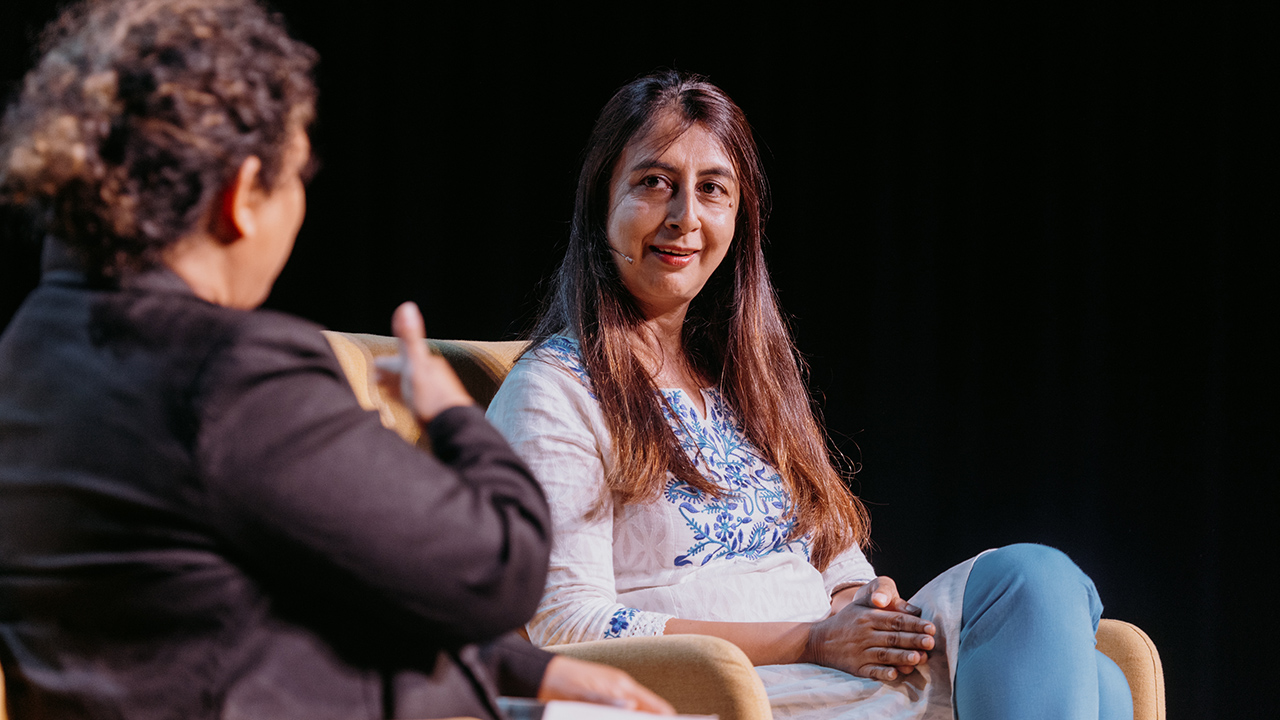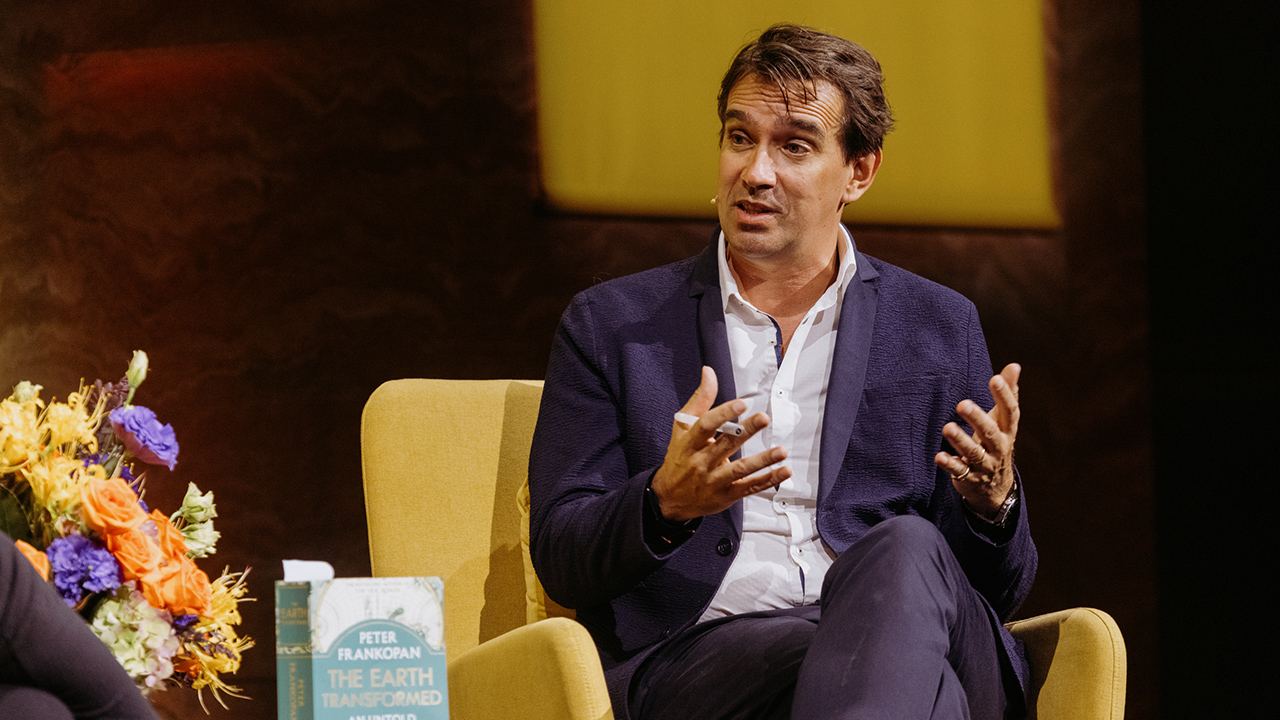Felicity-Tram Tu | Designing diseases

We need to start changing the way we perceive diseases, and start working with them.
When the Black Plague swept the world, a mere cough could mean a death sentence. It took centuries for us to better understand infectious diseases, however when COVID-19 arrived, we were just as vulnerable as we were all those years ago.
Scientists have long been sounding the alarm bells that a global pandemic could arrive at any time, and yet when it finally did, governments were ill-prepared and millions died. COVID-19 wasn’t the first global pandemic, and it certainly won’t be the last… so how can we prepare our medical arsenal to ensure we’re better equipped next time. Because the next devastating pandemic could be just around the corner.
This talk was a part of Fresh Blood, an event of short talks in the 2022 Festival of Dangerous Ideas.
Transcript
UNSW Centre for Ideas: Welcome to the UNSW Centre for Ideas podcast. A place to hear ideas from the world's leading thinkers and UNSW Sydney’s brightest minds. The talk you're about to hear, Designing Diseases, features UNSW Sydney student Felicity-Tram Tu, and was recorded live. This talk was a part of ‘Fresh Blood’, an event of short talks in the 2022 Festival of Dangerous Ideas.
Felicity-Tram Tu: The bubonic plague swept Europe in the 14th century, from dirty streets to the modest home, where the slightest cough meant that you were playing a chance between life and death. Many had believed it had spread through bad smells called miasma. Others believed there was punishment from God. But no one really knew what caused this pandemic. And it took centuries till we understood that diseases came from pathogens. Germ theory enabled us to understand how diseases were caused and spread. And that taught us how to properly face off against future outbreaks. It was at this point where we finally had a foot forward to improvement.
Then we skip to the present day with COVID-19. It's the pandemic of our lifetimes. We met it front on with medicines built on centuries of scientific knowledge, scientists all around the world came together to create a vaccine in record time. Our response to COVID is probably one of the greatest displays of how advanced we are. However, we only got better at responding. We're still just as vulnerable as we have been all those centuries ago with the black plague. Because the way we face diseases is to simply wait for it.
The bubonic plague came, and then we reacted. Cholera arrived, and then we reacted. COVID came, and then we reacted. And it's been like this, despite how advanced we become. In fact, there were people who warned us that something like COVID was going to happen some years ago. And yet, we still waited. And that's our mistake, the same mistake we made for centuries.
We don't do anything until it's at our doorstep. And by the time we reached for the door handle, it's broken in the window. And we can't afford to do that anymore. COVID isn't our first pandemic, and nor will it be our last. And with the news of monkeypox coming in, with polio re-emerging from the shadows, who are we to say that we're not going to face something catastrophic soon? So unless we want to risk millions of lives again, we can't afford to wait anymore, we need to do something new.
I'm Felicity, I'm a third-year science and art student. And I want to work on the next line-up of disease preventing technologies for our future. And I genuinely believe that we need to start making diseases. Now, making diseases may sound very foreign and playing God. But it's actually a lot more feasible than it seems. Let's start with COVID, we grab all of COVID, all of what we know, and we run it through a computer. It’s going to look at the genetic information, and is going to tell us two important things. What genetic code is different between the variants, and which parts are the same. This will tell us what is different in the genetic code without these variants turning into an entirely different species. Now this, we're already doing, we've got intricate family trees of different types of COVID through this. But I want to bring it further.
Instead of just looking at the past, I want us to look at the future. I want the computer to create an algorithm out of the patterns it’s seen between each variant, from looking at what part of the genetic code is more likely to be different between variants. From there, I want our computer to make us hypothetical variants. And when we look at these hypotheticals, we'll weed them out. Because we don't want something that's similar to what we've seen before. It's not really going to teach us anything new. Rather, we're interested in the enigmas, the ones that we're not entirely sure about, because it's more than likely that these will be the ones that will wreck the most havoc, then we take it from the computer into the lab. Now I'm not saying that we start testing out on people, but we do need animal models to demonstrate the risk of these never before seen variants. And because they're variants of what we've seen already, we still have a foundational understanding of the disease. So with COVID, even if we made an entirely different looking variant that has never been seen before, it's still technically COVID.
But now you might be asking, If that's so, then why bother? Aren't variants similar to one another, anyway? Well, that's exactly why it matters. Our problem with variants is that we like to think that they’re quite similar to one another, so we forget that we cannot actually approach each in the same way.
Variants are not duplicates, they’re variants. In 2020, with Delta, the Pfizer, biotech vaccine was 95% effective after two doses, Omicron required three to reach 83% efficacy. And the only difference between them is only a couple of genetic differences. But if we made up variants ahead of nature, and observe the impact beforehand, we can assess how prepared we really are. We can test how our current weaponry, our medicines, our vaccines, how are they able to withstand our new variant. And by doing that we know what our weaknesses are. And then we know how to remedy them. No longer do we have to wait for something new to come around and find that our weapons are ineffective. Now, when nature spits out a variant close to what we made ourselves, we're ready for it. And we can prepare for new diseases we never encountered before, using this very same method. And I'm not talking about making a COVID- 19 2.0. I'm talking about things we barely had exposure to. Because honestly, if you thought viruses like COVID are scary. There's a whole heap of other, way scarier stuff out there, that we're not aware of. Things that some of you never heard of before, for instance, prion diseases.
So our bodies are made up of proteins, the building blocks of all living things, they are what make sure that we function well. And proteins always work together to make us healthy. However, there are proteins out there that have gone rogue, the bad proteins that mess up our good proteins and turn them into bad proteins as well. So instead of having good proteins, helping you grow and function, these destroy many vital systems of our bodies. These are prions. A famous example you might have heard of is mad cow disease, the one that infected people through beef and milk. Now, the scary thing about prion disease is the fact that if one gets in successfully, nothing can stop it. You will die a very gradual death. There's no cure, no treatment, no vaccine. Nothing can stop it. But Mad Cow isn't the only prion disease out there. And honestly, I doubt that many of you can name another, which is worrying because some of us are living very close to some prion diseases right now. Chronic Wasting Disease infects deer and elk to act like zombies. They grind their teeth, the mouth is dripping with infectious saliva, they’re stumbling for the bushes, a body full of tremors, these deer are quite literally wasting away. And this disease exists in every one in three deer in the US alone. Thirty percent of deer in the wild are zombies. The main reason why we don't really think all too much about a disease like Chronic Wasting Disease is because it hasn't figured out how to jump from deer to human. Scientists figure it's because of a species barrier where it's much harder to infect different species than it would be infecting the same. So this is probably why we don't hear of chronic wasting disease in people just yet. But that doesn't make us immune. After all, Mad Cow figured out how to become zoonotic, how to jump from animal to human. Who's to say that Chronic Wasting Disease won't start infecting people? What do we do when that happens?
Well, we don't know. After all, it's never happened before. We actually don't know a whole lot about prions. And we don't know what exactly makes a prion zoonotic, and the only way we can investigate that is if we purposely go at it. Find out what exactly made mad cow able to infect people? And can something like Chronic Wasting Disease do the same? How does it manage to affect our proteins despite the differences in species?
And again, I want us to test these new prions on animal models to see what we should expect in terms of symptoms and figure out if we can potentially treat them. If we know what makes a prion become zoonotic, we can then look for ways to try to prevent them from happening. I'm talking about potentially making a vaccine. And the list goes on and on from prions and viruses over to bacteria and fungi. We can prepare for all sorts of diseases of the future before the future.
Now, I can't exactly start talking about making diseases without sounding weirdly like the sequel to the COVID conspiracy, the one that is supposedly made in the Wuhan lab. Nah, it just seems like one big Pandora's box into bioterrorism, whether it be for one bad actor or entire governments. But what I'm talking about isn't making bioweapons. What I'm talking about is a serious approach to how we research new diseases, where our next step forward is no longer disease observation, but disease creation, where we stop waiting for them to come and hurt our people, our friends, our families, we've got so much arsenal and knowledge and experience of disease. And we've done really well to get to where we are now. But we still hesitate to use all our knowledge to our advantage. We're limiting ourselves, we're not prepping in all the ways we can be. And instead, we just never expect a new disease where we know diseases are inevitable. And in my opinion, I feel like it's more dangerous to simply stand by and wait for something to hit than to just begin our preparations for the future. I believe we're at a time where we need to start changing the way we perceive disease, and start working with them to better understand them, to improve our medicine to be ready for the next outbreak. To make them our next best telescope into an expansive world still so unknown to us. After all, wouldn't you want the next pandemic to be one we're prepared for?
UNSW Centre for Ideas: Thanks for listening. This talk was presented by the UNSW Centre for Ideas and Festival of Dangerous Ideas. For more information visit centreforideas.com, and don't forget to subscribe wherever you get your podcasts.
-
1/3
-
2/3
-
3/3

Felicity-Tram Tu
Felicity-Tram Tu is completing a Bachelor of Advanced Science (Honours) and Bachelor of Arts, in the Faculties of Science and Arts, Design & Architecture at UNSW Sydney. Her scientific research areas include biotechnology and immunology, with a somewhat morbid fascination in diseases, along with majoring in Japanese and French.



